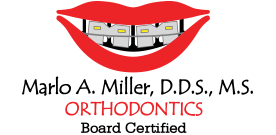Who Is a Good Candidate for an Invisalign Aligner? Teens, Adults & Treatment Scope

An Invisalign Aligner offers a discreet, comfortable orthodontic solution for those seeking to straighten their teeth without metal brackets. Ideal candidates include individuals with mild to moderate crowding, spacing issues, or minor bite irregularities. Compliance plays a pivotal role, as the aligners must be worn for twenty to twenty-two hours each day to achieve optimal results. Prospective patients should demonstrate good oral hygiene habits and a commitment to follow treatment recommendations. A preliminary evaluation by an experienced orthodontist helps confirm that clear aligner therapy is appropriate for a patient’s unique dental anatomy.
Key characteristics of an ideal Invisalign candidate
A suitable candidate typically exhibits fully developed permanent teeth and healthy gum tissue free of significant periodontal disease. Responsible teenagers who can adhere to wearing aligners consistently often do well, provided they understand the importance of maintenance and follow-through. Adults seeking a cosmetic improvement commonly appreciate the virtually invisible appearance and the ability to remove aligners during meals and oral care. Those with severe malocclusion, large jaw discrepancies, or complex orthodontic needs may require traditional braces or surgical intervention rather than clear aligners. Ultimately, personal responsibility, regular dental check-ups, and meticulous care of appliances determine treatment success.
Age considerations: teens vs adults
Invisalign has tailored solutions for different age groups: Invisalign Teen features compliance indicators and eruption tabs for young patients, while standard aligners cater to adults. Mature adolescents around ages 12 to 17 often have all permanent teeth, making them prime candidates for clear aligner therapy. Adults in their 20s, 30s, and beyond encounter no maximum age limit, and aligners can address relapse from prior orthodontic work. Pediatric cases under age 12 may require early intervention with other orthodontic approaches. Before selecting a treatment path, a thorough assessment of jaw growth, tooth development, and personal habits guides the decision.
How is Invisalign Aligner suitability assessed?
A comprehensive orthodontic evaluation is the first step in determining candidacy for an Invisalign Aligner. Digital scanning and 3D imaging map tooth positions, enamel structure, and root alignment, enabling a detailed simulation of treatment progression. The orthodontist reviews dental history, evaluating past restorations, implants, or bridges that could influence aligner fit. Oral health status, including gum condition, cavity prevention, and jaw joint health, factors into the planning process. After analyzing scans, the provider devises a customized series of aligners designed to apply precise forces in sequence.
The role of clinical evaluation and 3D imaging
Clinical examinations measure bite relationships—overbite, underbite, crossbite—and detect asymmetries that clear aligners can correct. Advanced 3D imaging technology delivers high-resolution models for simulation software, allowing patients to preview their projected smile. This digital approach enhances communication between practitioner and patient, setting clear expectations. It also supports monitoring, as progress scans can be compared to the original plan and adjustments made if teeth do not track as intended. Such technological integration elevates treatment predictability and patient satisfaction.
Behavioral and lifestyle factors
Successful clear aligner therapy hinges on patient compliance, as aligners must remain in place except for eating, drinking non-water beverages, brushing, and flossing. Busy professionals and active teens should consider whether wearing aligners twenty hours a day aligns with their routines. Individuals who frequently snack or play wind instruments must adapt habits to accommodate appliance removal and reinsertion. For those with variable schedules, built-in reminders and smartphone apps help maintain adherence. Lifestyle alignment prevents treatment delays and reduces the risk of extended treatment duration.
Common aligner suitability issues and how to address them
Certain orthodontic challenges, such as rotated molars or teeth with extreme angulation, may require attachments—small tooth-colored bumps bonded to tooth surfaces—to facilitate precise movements. While attachments increase versatility, some patients prefer minimal bonding for aesthetic reasons. In cases of pronounced bite discrepancies or skeletal issues, adjunctive treatments like elastics or temporary anchorage devices (TADs) might integrate with the Invisalign protocol. Proper management of periodontal concerns and cavities before commencing aligner therapy ensures that dental health does not undermine progress. Open communication with the orthodontist allows timely problem resolution if an aligner does not fit correctly.
| Issue | Recommended Solution |
| Rotated or tilted teeth | Addition of tooth-colored attachments |
| Severe overbite or crossbite | Use of elastics or TADs alongside aligners |
| Inadequate compliance | Smartphone tracking apps and compliance indicators |
| Gum inflammation or decay | Pre-treatment periodontal therapy and restorations |
| Poor aligner fit | Mid-course digital scan and treatment refinement |
Invisalign for teens: candidacy and considerations
Adolescents benefit from Invisalign Teen when they understand the importance of diligent wear and maintenance. The aligners include blue wear-time indicators that fade as compliance increases, giving parents and orthodontists objective feedback. Teen patients must have positive attitudes toward oral hygiene and be willing to attend routine visits every eight to twelve weeks. Clear aligner therapy empowers teens to maintain a natural appearance during social and extracurricular activities. However, busy school schedules and sports can challenge consistent wear, making parental support and clear guidelines essential.
Addressing growth and dental development
Teenage jaw growth continues until the late teens, impacting treatment timing and sequence. Orthodontists evaluate growth potential through cephalometric X-rays and clinical measurements. If growth remains active, aligning bones and teeth simultaneously may produce more efficient results, sometimes necessitating early interceptive treatment. Alternatively, waiting until growth plate closure in late adolescence offers a more stable foundation for tooth movement alone. The choice depends on individual growth patterns, orthodontic goals, and patient readiness.
Scope of treatment with clear aligner therapy
Clear aligner therapy excels at correcting mild to moderate dental crowding, gaps, and bite irregularities such as overbites, crossbites, and open bites. The 3D treatment planning software calculates incremental movements, ensuring forces distribute evenly across the arch. Cases involving minor relapse or maintenance after previous braces often achieve dramatic improvements within six to twelve months. More complex scenarios, such as severe malocclusion or significant midline discrepancies, may require longer durations or hybrid protocols combining aligners with fixed appliances. Nonetheless, clear aligners represent a versatile platform adaptable to a broad spectrum of orthodontic indications.
| Treatment Indication | Aligners Recommended | Alternative Approach |
| Mild to moderate crowding | Yes | |
| Gapped dentition | Yes | |
| Overbite correction (≤ 4 mm) | Yes | |
| Crossbite (single tooth) | Yes | |
| Severe overbites or skeletal issues | Possibly with adjuncts | Traditional braces or surgery |
| Complex rotations requiring torque | Yes with attachments |
Comparative overview: traditional braces vs clear aligners
Traditional metal braces remain the gold standard for complex orthodontic cases requiring high-precision tooth movement and torque control. However, clear aligners deliver a more discreet look, improved comfort, and easier hygiene maintenance. Without wires and brackets, patients avoid emergency visits for broken appliances and experience less soft tissue irritation. The ability to remove aligners also eliminates food restrictions typical of braces. Conversely, missed wear hours extend treatment timelines, and aligners may be less efficient at extreme vertical control or large rotational movements.
Integrating internal orthodontic resources
Patients often explore treatment options on practice websites and appreciate direct links to relevant services. One can learn about aligner technology by visiting What Is an Invisalign Aligner in the resource section. Understanding available solutions fosters informed decision-making and confidence in pursuing a customized treatment path.
In another helpful section, visitors can review Orthodontic Services to compare clear aligner therapy with other corrective modalities. Embedding these internal links supports deeper engagement and highlights the practice’s comprehensive expertise.
Many prospective patients are intrigued by the advantages of clear aligners and may consult Invisalign Aligner Benefits to understand comfort, aesthetics, and maintenance features. Such information showcases how SmartTrack material and precision planning yield efficient tooth movement and patient satisfaction.
Treatment compliance and support systems
Ongoing support from the orthodontic team ensures steady progress and rapid troubleshooting when challenges arise. Patients benefit from smartphone apps that send daily reminders to wear aligners and track compliance data. Regular check-ups allow minor refinements and ensure attachments remain securely bonded. For young patients, parental involvement and encouragement prove critical to maintaining discipline and achieving desired outcomes. Peer support groups and online forums also offer real-time advice on managing common concerns such as speech adaptation and minor discomfort.
Choosing the right provider for clear aligner therapy
Selecting an experienced orthodontic practice brings results and peace of mind. Prospective patients should seek clinicians certified in digital treatment planning, with access to the latest aligner protocols and adjunctive techniques. A practice that integrates in-office scanning, CBCT imaging, and team-based care delivers consistent quality and shorter appointment times. Reviews and before-and-after galleries provide insight into real-world outcomes under a provider’s expertise. When evaluating offices, consider the scope of services, financing options, and the overall patient experience.
Conclusion
Marlo A. Miller, DDS, MS Orthodontics offers state-of-the-art clear aligner therapy, combining digital precision with personalized care to treat teens, adults, and complex cases alike. Patients gain access to advanced 3D imaging, custom treatment simulations, and dedicated support throughout their journey. The practice’s commitment to education, compliance monitoring, and ongoing innovation makes it a premier choice for anyone seeking an Invisalign Aligner solution. For a professional evaluation and tailored treatment plan, reach out to the experts who prioritize both aesthetics and oral health.
Frequently Asked Questions
What if my aligner doesn’t fit correctly?
If an aligner feels too tight or loose, patients should contact the orthodontic office promptly for an adjustment. The provider may recommend wearing the previous set longer or scheduling a mid-course scan to refine the digital model and fabrication.
Are Invisalign clear aligners comfortable?
Made from patented SmartTrack material, Invisalign clear aligners adapt to the patient’s gum line for optimal comfort and appearance. Most wearers report minimal soreness compared to traditional metal braces after switching to a new tray.
Do Invisalign aligners require attachments?
Attachments are small, tooth-colored bumps bonded to specific teeth when additional grip or complex movements are necessary. Some straightforward cases may proceed without attachments, but many patients find them essential for achieving precise results.
How do I maintain oral hygiene during treatment?
Patients should remove aligners for eating and thoroughly brush and floss teeth at least three times daily. Aligners themselves require daily cleaning with a soft brush and clear, gentle cleaner to prevent staining and odor.
